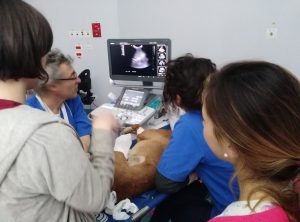Use of acute phase proteins for the clinical assessment and management of canine leishmaniosis: general recommendations
Ceron JJ1, Pardo-Marin L2, Caldin M3, Furlanello T3, Solano-Gallego L4, Tecles F2, Bernal L2, Baneth G5, Martinez-Subiela S2
Use of acute phase proteins for the clinical assessment and management of canine leishmaniosis: general recommendations
Scarica pubblicazione
Abstract
Background
Dogs with canine leishmaniosis (CanL) due to Leishmania infantum can show a wide spectrum of clinical and clinicopathological findings at the time of diagnosis. The aim of this paper is to describe the possible application of acute phase proteins (APPs) for the characterization and management of this disease, based on previously published information on the utility of APPs in CanL and the experience of the authors in using APPs as analytes in the profiling of canine diseases.
Main body
Dogs diagnosed with L. infantum infection by serology, polymerase chain reaction, cytological or histopathological identification, can be divided into three groups based on their clinical condition at physical examination and their APPs concentrations: Group 1: dogs with no clinical signs on physical examination and APPs in reference range; Group 2: dogs with changes in APPs but no clinical signs on physical examination; Group 3: dogs with clinical signs and changes in APPs. This report describes the main characteristics of each group as well as its association with the clinical classification schemes of CanL.






 Il Direttore Sanitario Dott. Marco Caldin
Il Direttore Sanitario Dott. Marco Caldin